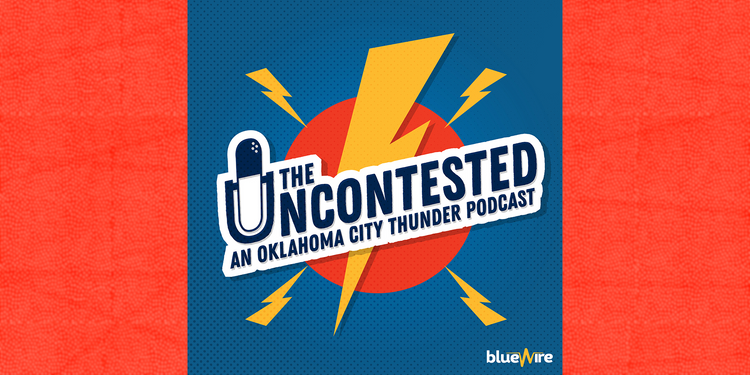Making The Case for Corey Kispert

Sam Presti has a type. Throughout his time at the controls, Presti has consistently put a premium on length and athleticism. It’s the market niche he’s always tried to exploit. Whereas other teams have tried to have the fastest pace, the most shooting, or the best rim protector, Presti envisions a team of freak athletes that can apparate across the court in the blink of an eye.
In short, Presti has never been a fan of guys like Corey Kispert.
The sweet-shooting wing from Gonzaga is a below-average athlete, especially on the NBA level, who offers no bonus height, length, or explosiveness. But the things he does provide are tools the Thunder lack.
The athletes-first strategy has often worked for Presti. The Thunder’s years as contenders were built around the otherworldly ability of Kevin Durant, Russell Westbrook and Serge Ibaka. All three are among the most athletic players in the league at their positions, flying around the court like fighter jets. But just as many draft picks have failed to launch, guys like Terrance Ferguson, Josh Huestis, and Perry Jones. The jury is still out on Darius Bazley.
This preference for length, youth, and physical traits has a trade-off. For the entirety of the franchise’s time in Oklahoma, the team has struggled with 3-point shooting, ball movement and basketball intelligence. The team has generally only shot well when buoyed by Durant, the only high-volume, high-efficiency shooter OKC picked on purpose, or by imports from other teams, like Paul George, Chris Paul, and Danilo Gallinari.
Kispert would bring shooting that the Thunder, the second-worst team from three in the league, sorely lack. Over his final two seasons for the Zags, Kispert hit 44 percent on 5.9 attempts per game — making it an extremely efficient shot. And unlike statuesque spot-up guys dotting the Thunder’s past like Steve Novak or Anthony Morrow, Kispert is a mobile weapon, constantly cutting, floating to open space or flashing off screens.
Players with that kind of skillset have intense gravity that warps defenses at all times, not just when that player has the ball. This is especially true for Kispert, who has a quick release and is comfortable several feet beyond the 3-point line. That makes Kispert a perfect complementary piece to Shai Gilgeous-Alexander, who can exploit those ripples in space-time and teleport to the basket.
Among players under contract to return for the Thunder next year, only three took at least two 3-pointers per game and made better than 34 percent. One of those is Al Horford, who is not part of the Thunder’s future. One is SGA himself. The last player is Ty Jerome, who had a nice season, but is hardly a defense-bending threat. SGA needs help.
Kispert has shown some ability to attack a closeout and drive for a bucket, but he has a long way to go to be a second offensive creator. His passing reads are a tick slow, and his dribble is a little loose, resulting in turnovers. While worrisome, these things are correctable. The bigger hurdle for Kispert will be on the defensive end, where he will always be limited by his lack of lateral quickness and explosiveness. However, his 6-foot-7, 220-pound frame is an asset, and simply understanding defense well enough to get in position on time is usually enough to be an adequate team defender.
At 22, Kispert is one of the oldest players in the draft. NBA teams like to draft younger players because they can develop their bodies and skills, and there is more potential for finding a diamond in the rough. By contrast, we know what Kispert is: a flame-thrower from deep with a ceiling somewhere in the neighborhood of Joe Ingles. He’ll never be an elite defender, and he may never make an All-Star team. But Joe Ingles is a huge part of the team with the best record in the league. If that’s where the Thunder want to be, Sam Presti may need to take a second look at players like Corey Kispert.


